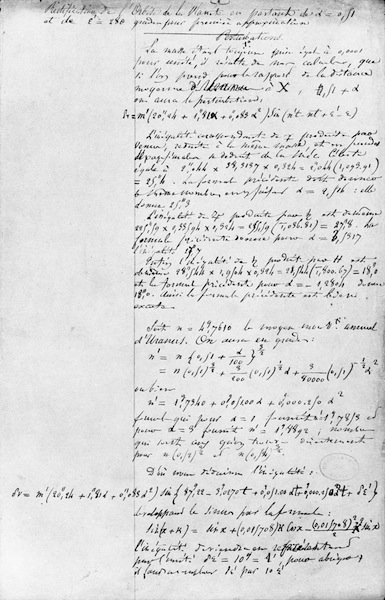
At the beginning of the 19e century, an astronomer at the Paris Observatory, Alexis Bouvard, employed to calculate the ephemeris of Uranus, realized that it was impossible to compute correctly the motion of this planet. He suggested that its motion could be influenced by the attraction of another as yet unknown planet.
Many astronomers took on the task of proving this hypothesis and tried to find the new planet. François Arago, director of the Observatory, asked a young astronomer who was at that time an assistant at the École polytechnique, Urbain Le Verrier (1811-1877), to take on the problem.
Le Verrier solved the problem in 1846 through some intensive computation, and predicted the position of the new planet, which was almost immediately found at the Berlin Observatory. This was Neptune, the most distant of the 8 planets of the solar system. Le Verrier thus became world-famous. In 1854, he followed Arago as director of the Paris Observatory.

